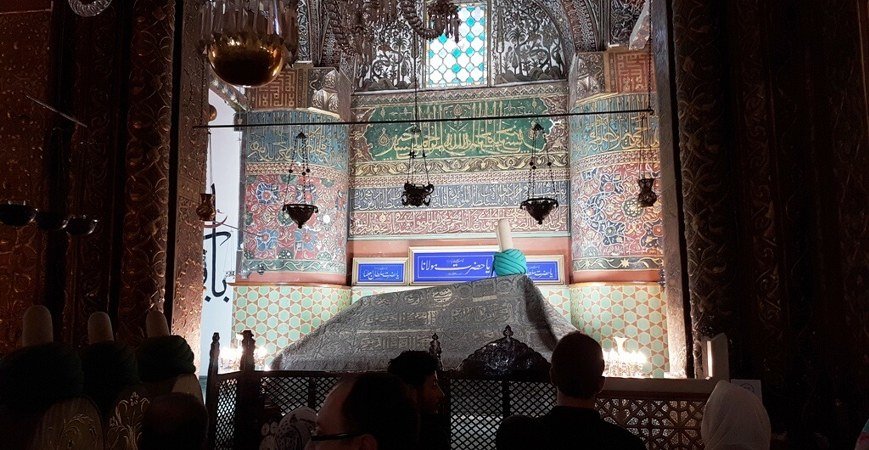
The Sarcophagus of Mevlana Konya – Chapter 1
The Sarcophagus of Mevlana Konya – Chapter 1,
The entire city of Konya mourned when on Sunday, December 17, 1273, as the sun set, the news came of the death of Mevlana, the great thinker, and mystic who was beloved by everyone. The following day with a great ceremony his body was taken to the sultan’s garden outside Konya Castle and buried at the side of his father. A few months after Mevlana’s death his son Sultan Veled with the help of some friends decided to construct a tomb over his father’s grave. Construction of the tomb began with a budget of ninety-two thousand drams. The architect was Tebrizli Bedreddin, a fine artist and a friend of Mevlana’s. The tomb was built in the shape of a dome of sixteen sections resting on four columns, and decorated on the outside with tiles and on the inside with painted designs. While the tomb was under construction an artist called Abdulvahid was designing a wooden sarcophagus to go over Mevlana’s grave. It had to be such a sarcophagus that the like had not been seen in the world before. The love and respect felt by Abdulvahid for Mevlana enhanced his skill to produce a work of unequaled beauty. The sarcophagus was to be made of burned walnut wood decorated with Seljuk designs and Odes from the Divan (collection of poetry) of Mevlana. At the head and foot would be written Mevlana’s name. The design was complete, all that remained was to have it constructed. Then a master carpenter called Genekoglu Humameddin Muhammed came and said that he would do it and his offer was accepted. A few months later the sarcophagus was complete. When all its parts were fitted together it was 2 m. 65 cm. long, 2 m. 13 cm. high and 1 m. 15cm. wide.
You can continue to find more details about The Sarcophagus of Mevlana Konya in chapter 2.